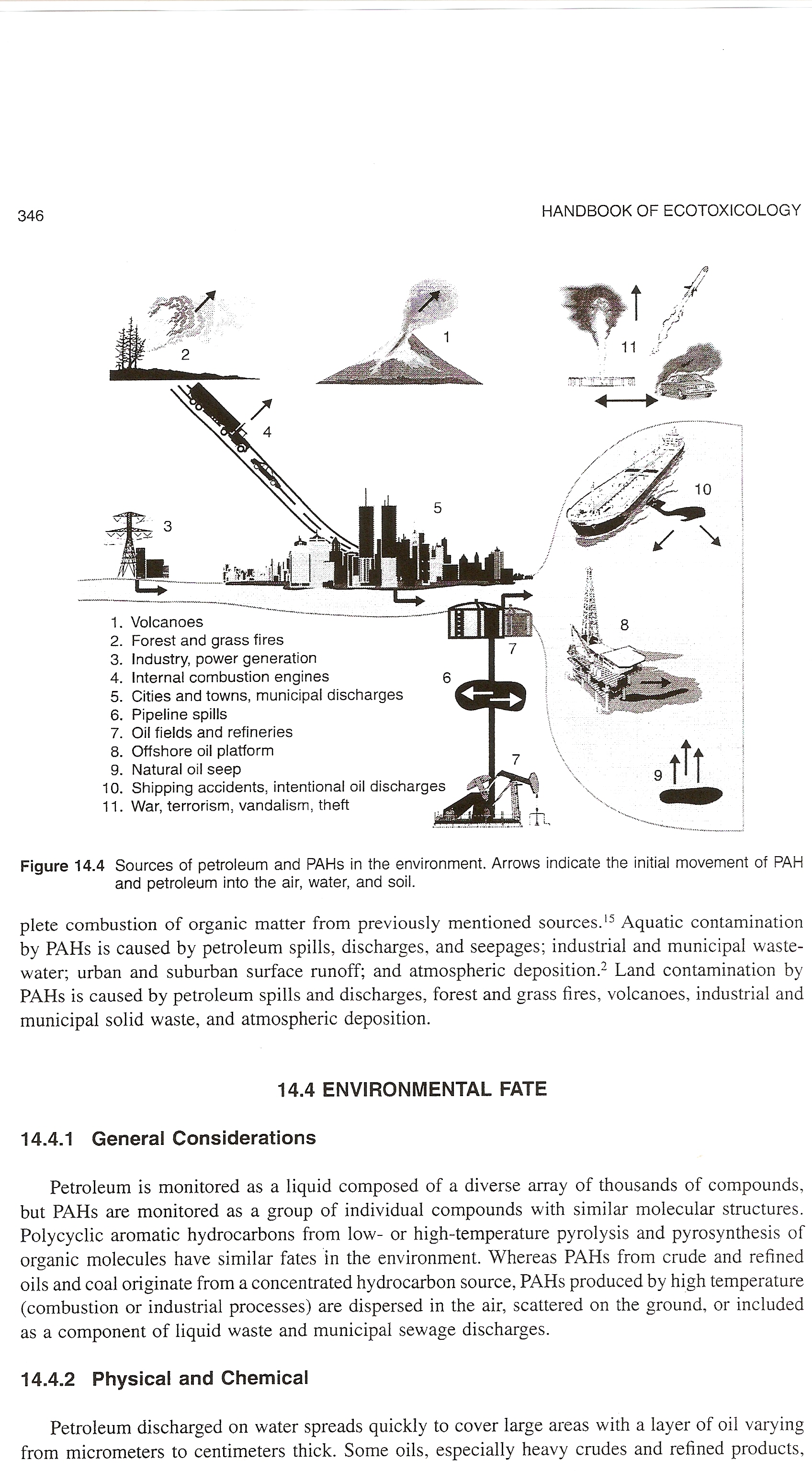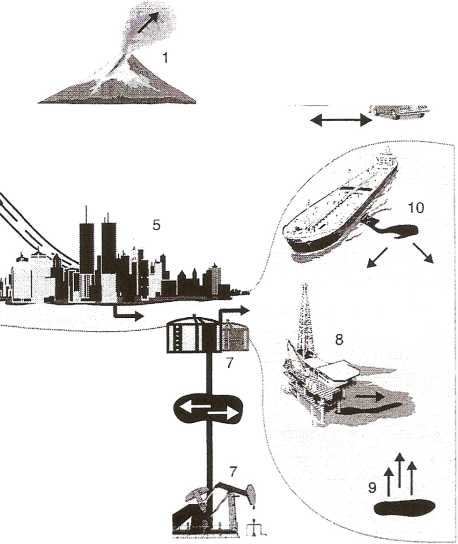scan0017 (7)

346
HANDBOOK OF ECOTOXICOLOGY

Figurę 14.4 Sources of petroleum and PAHs in the environment. Arrows indicate the initial movement of PAH and petroleum into the air, water, and soil.
1.
2.
3.
4.
5.
6.
7.
8. 9.
10.
11.
Volcanoes
Forest and grass fires Industry, power generation Intemal combustion engines 6
Cities and towns, municipal discharges Pipeiine spills Oil fields and refineries Offshore oil platform Natural oil seep
Shipping accidents, intentional oil discharges War, terrorism, vandalism, theft m
plete combustion of organie matter from previously mentioned sources.15 Aąuatic contamination by PAHs is caused by petroleum spills, discharges, and seepages; industrial and municipal waste-water; urban and suburban surface runoff; and atmospheric deposition.2 Land contamination by PAHs is caused by petroleum spills and discharges, forest and grass fires, volcanoes, industrial and municipal solid waste, and atmospheric deposition.
14.4 ENVIRONMENTAL FATE
14.4.1 General Considerations
Petroleum is monitored as a liquid composed of a diverse array of thousands of compounds, but PAHs are monitored as a group of individual compounds with similar molecular structures. Polycyclic aromatic hydrocarbons from Iow- or high-temperature pyrolysis and pyrosynthesis of organie molecules have similar fates in the environment. Whereas PAHs from crude and refined oils and coal originate from a concentrated hydrocarbon source, PAHs produced by high temperaturę (combustion or industrial processes) are dispersed in the air, scattered on the ground, or included as a component of liąuid waste and municipal sewage discharges.
14.4.2 Physical and Chemical
Petroleum discharged on water spreads ąuickly to cover large areas with a layer of oil varying from micrometers to centimeters thick. Some oils, especially heavy crudes and refined productś,
Wyszukiwarka
Podobne podstrony:
File0042 4 Study the Look out! box. Find an example of been and gone in the postcard. been and
491. G. J. T. Schuurkamp, The epidemiology of malaria and filariasis in the ok. te
• Analysing the results of tests and examinations in the national scalę and report
IMGB82 312 Literatura ROZDZIAŁ 13 Cooke I. J. (1969): Some effects of figlu and nutrrtron in the for
49240 scan0015 (8) 344 HANDBOOK OF ECOTOXICOLOGY Naphthalene Figurę 14.2 Examples of PAH compounds w
18599 scan0013 (9) 342 HANDBOOK OF ECOTOXICOLOGY14.1 INTRODUCTION Crude petroleum, refined petroleum
scan0021 (5) 350 HANDBOOK OF ECOTOXICOLOGY In water the toxicity cif individual PAHs to plants and a
24139 scan0019 (6) 348 HANDBOOK OF ECOTOXICOLOGY (bacterła, yeast, filamentous fungi) in the water m
Allison S. i in.: Podslawy żywienia klinicznego. Wyd. PZWL, 2007 Berdanier C. D„ Handbook of Nutriti
więcej podobnych podstron